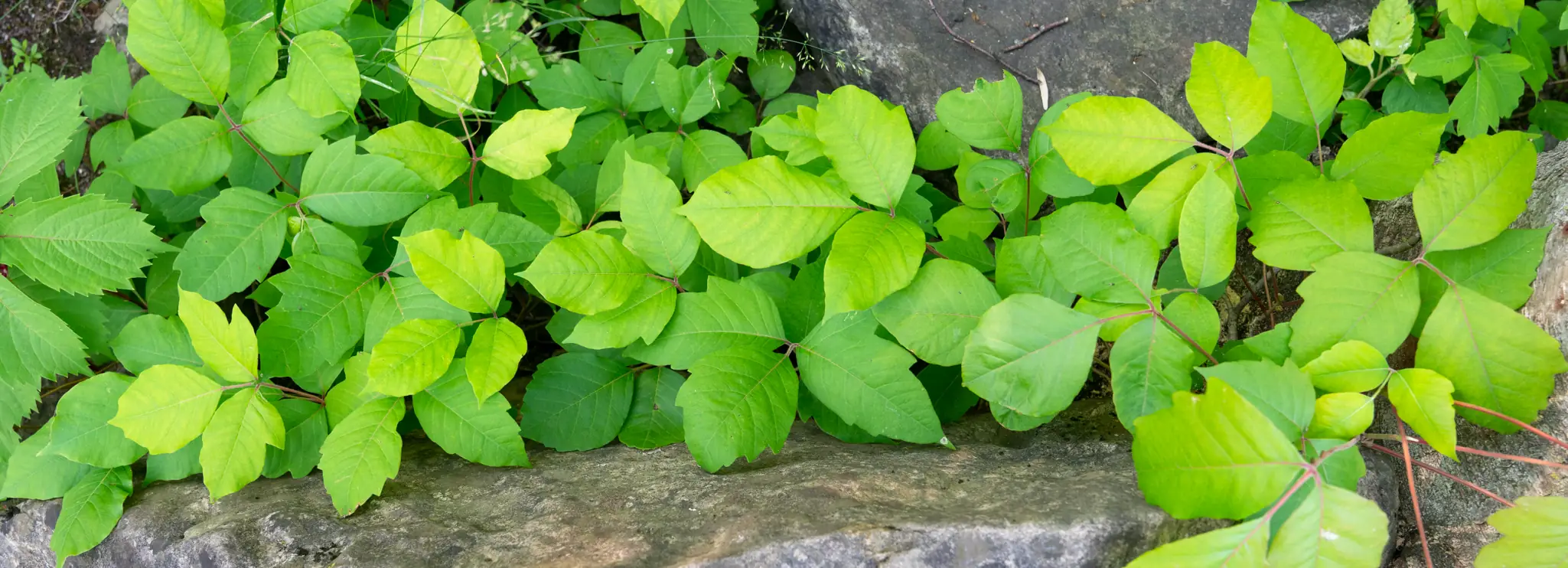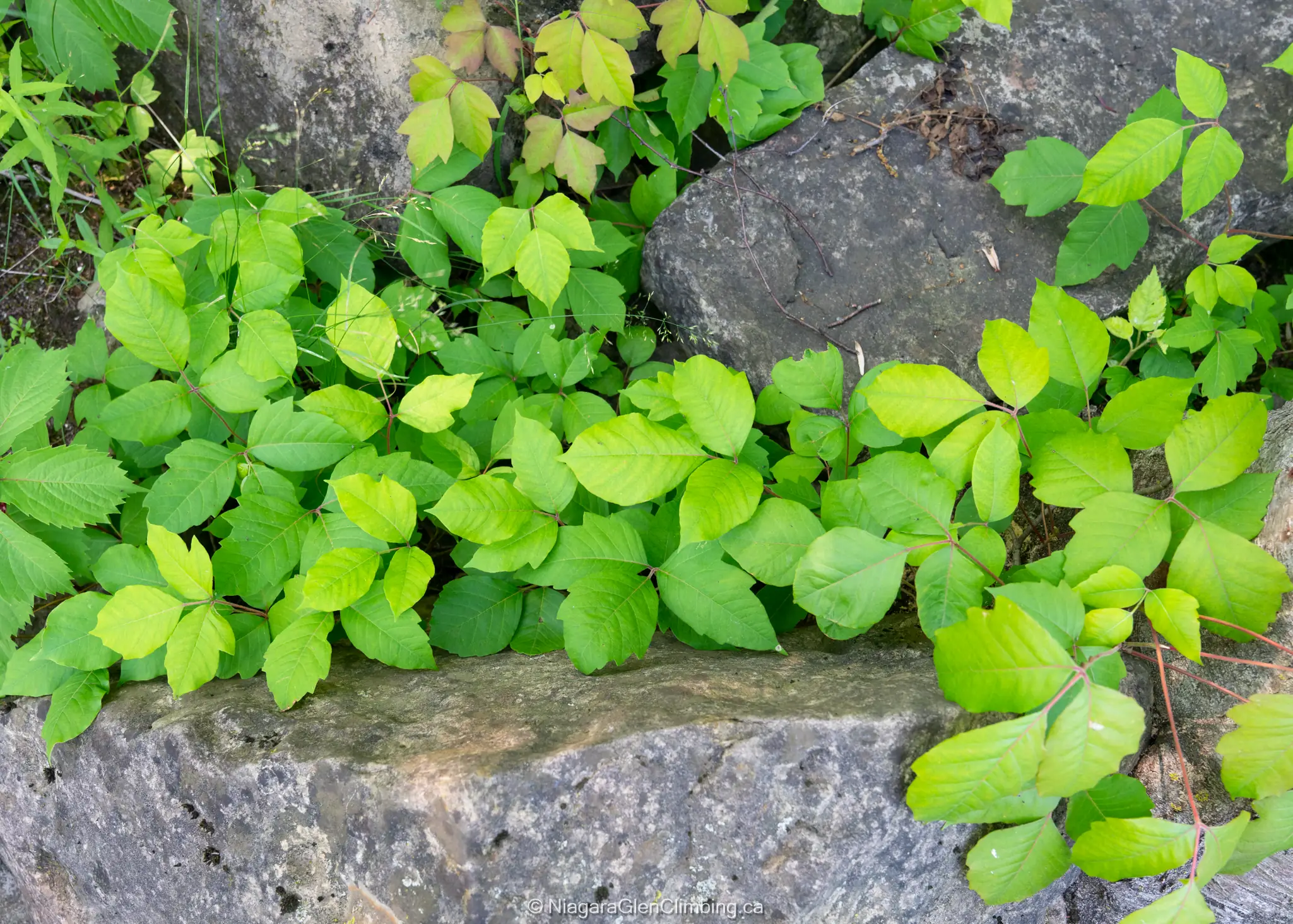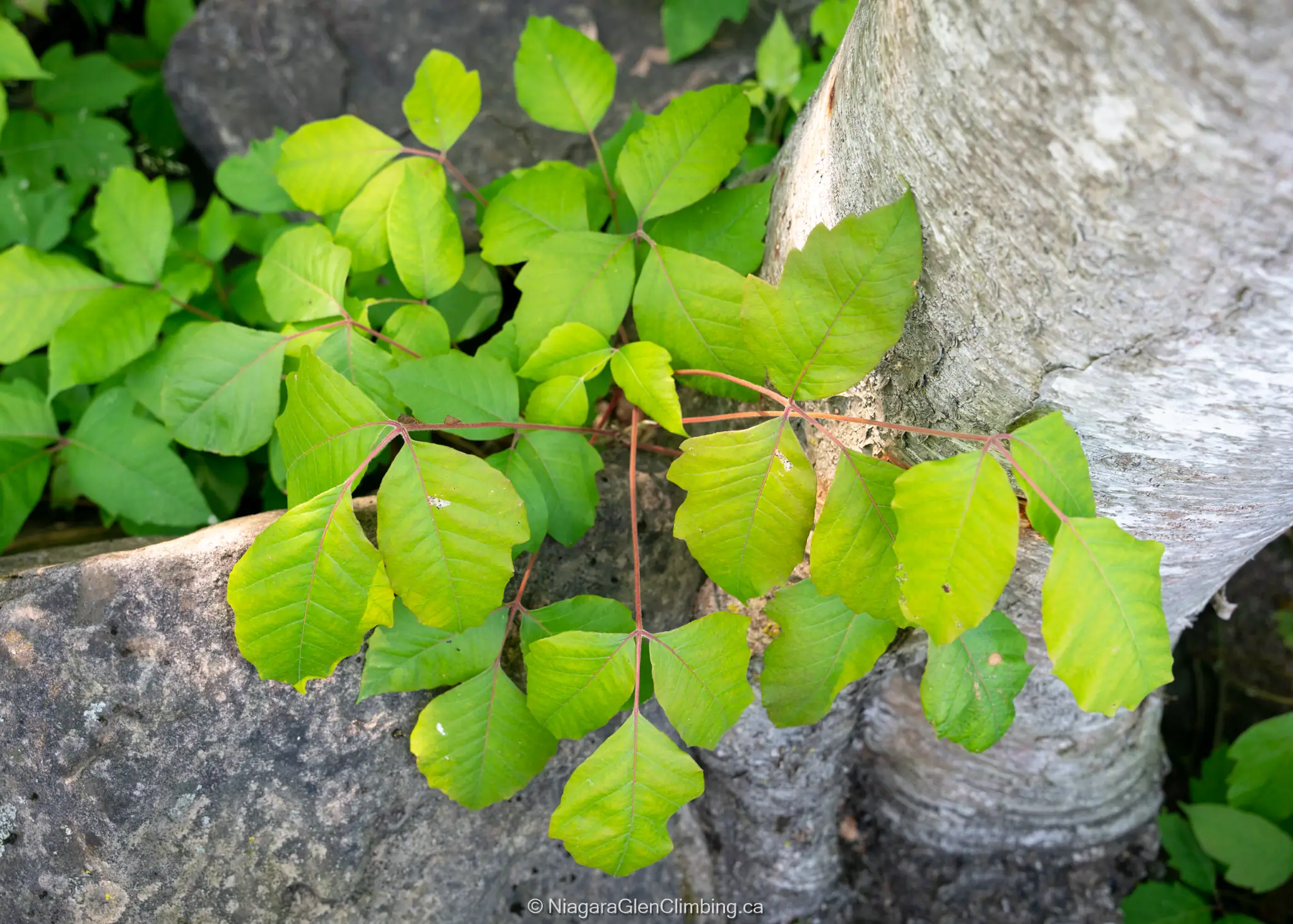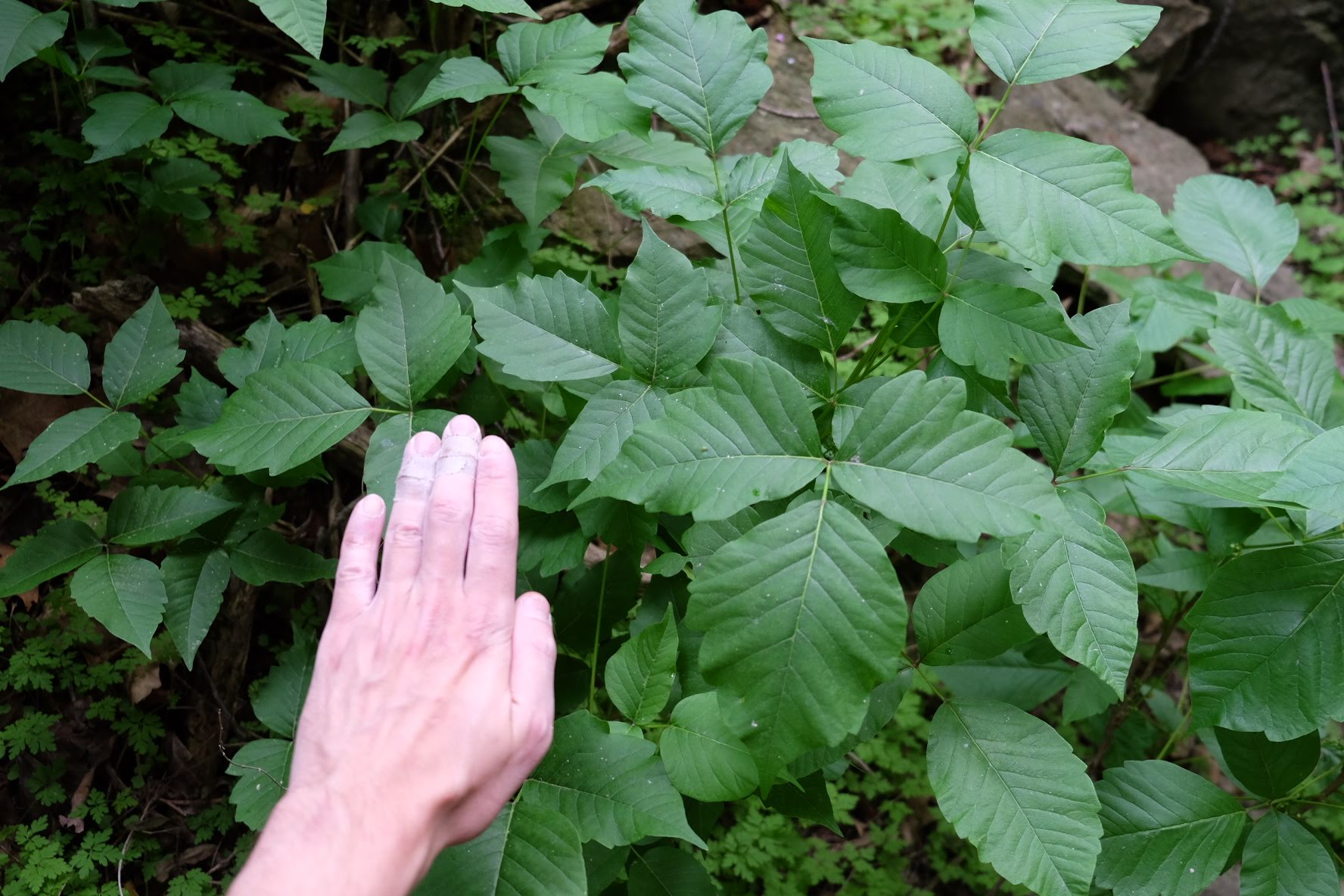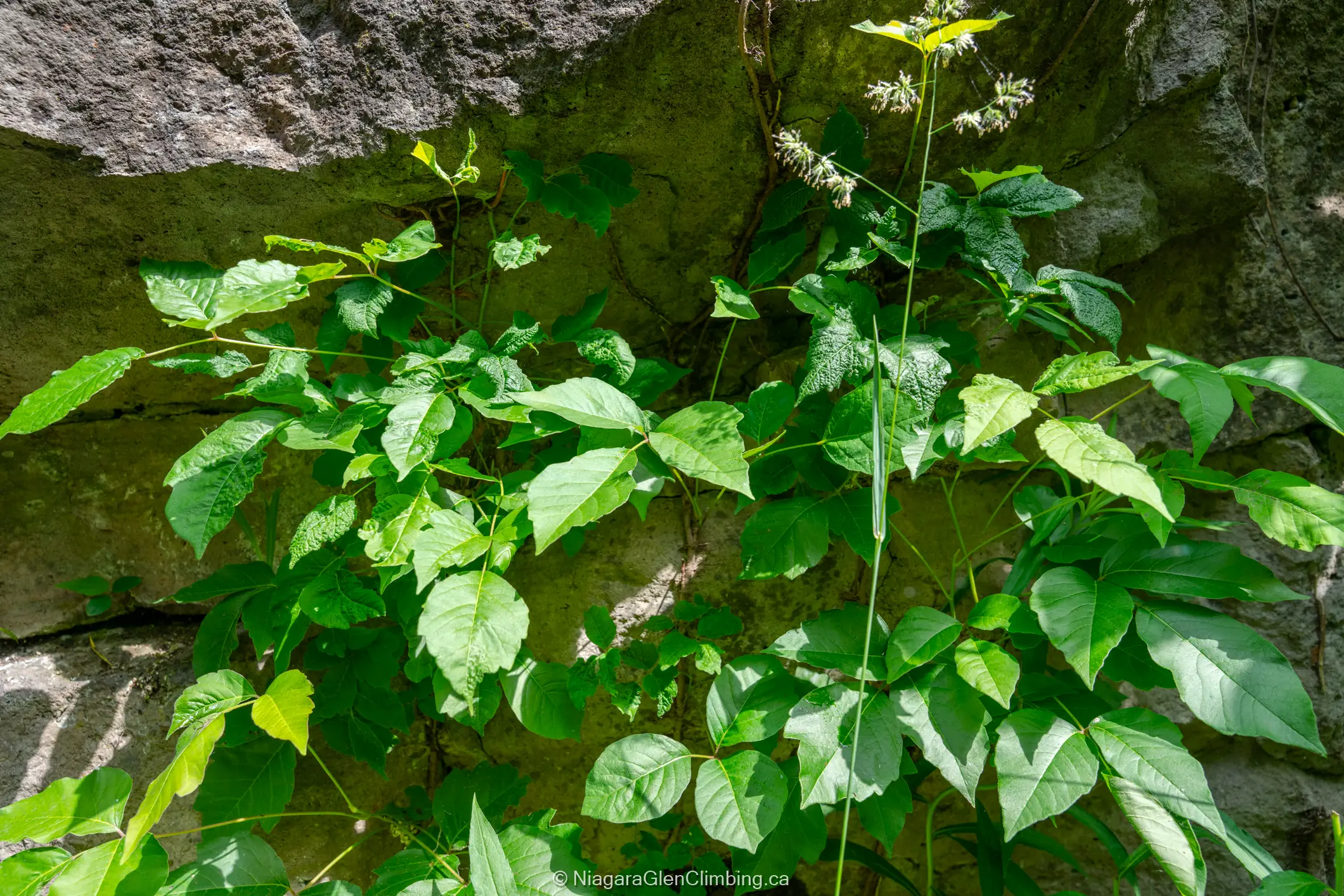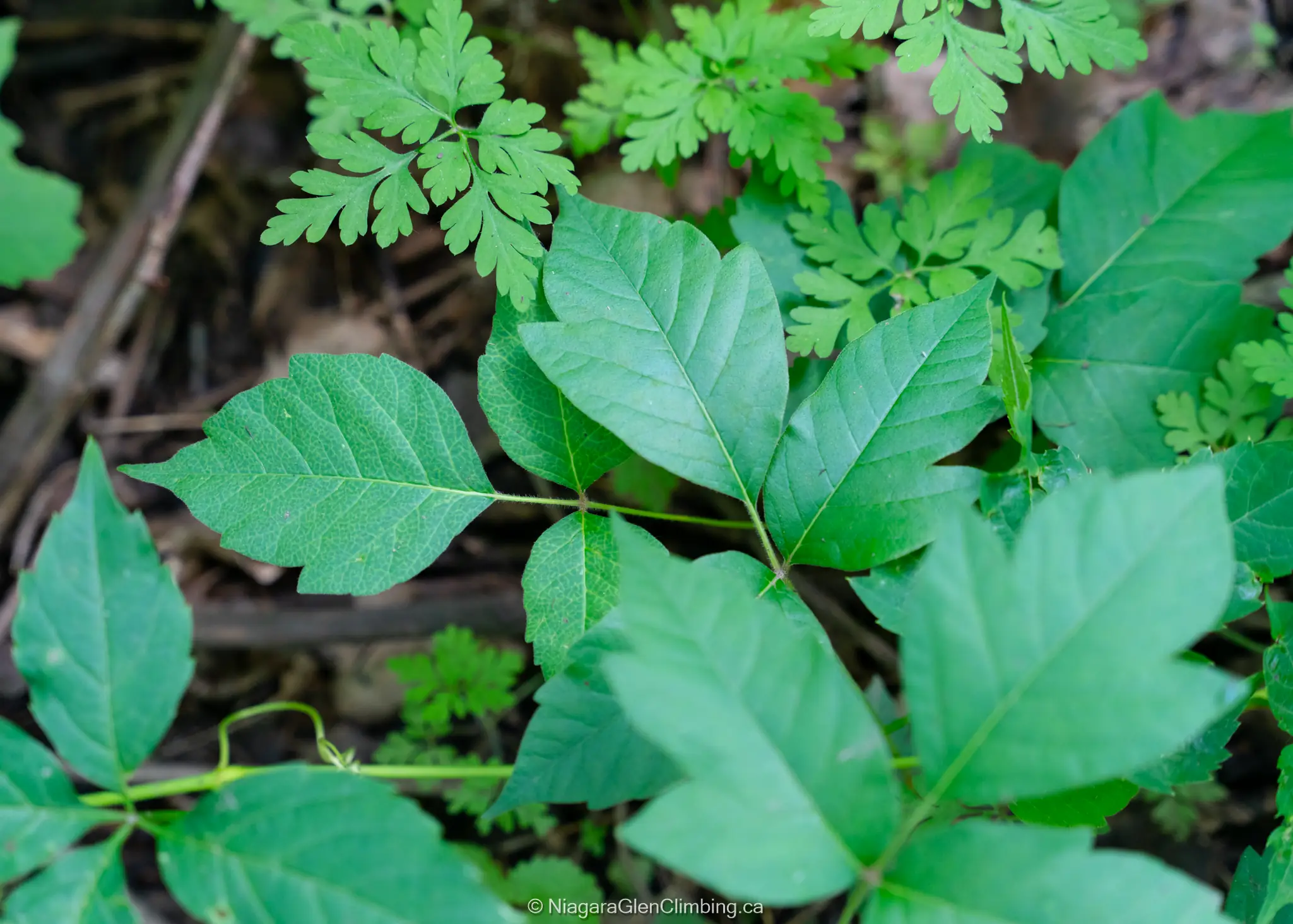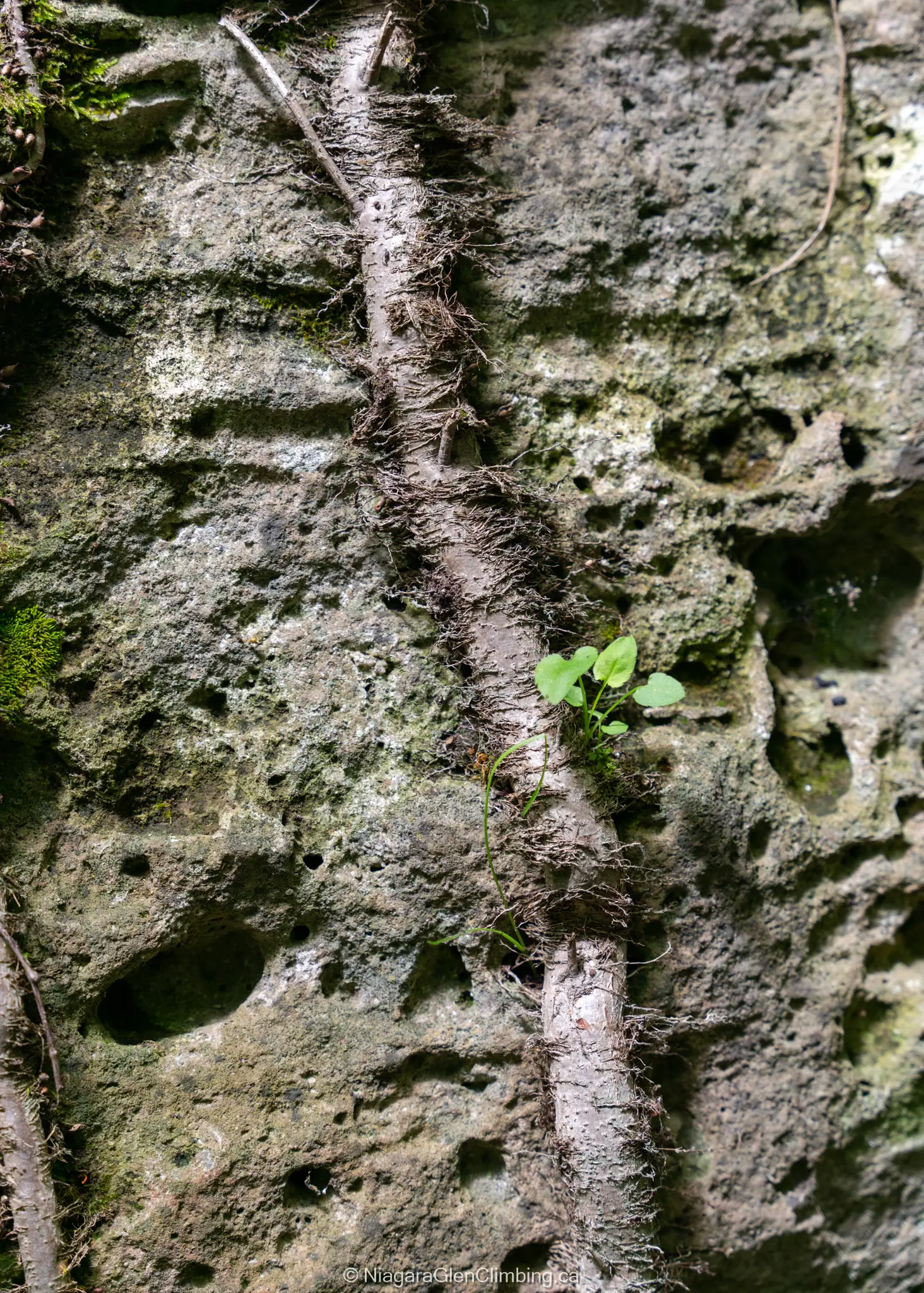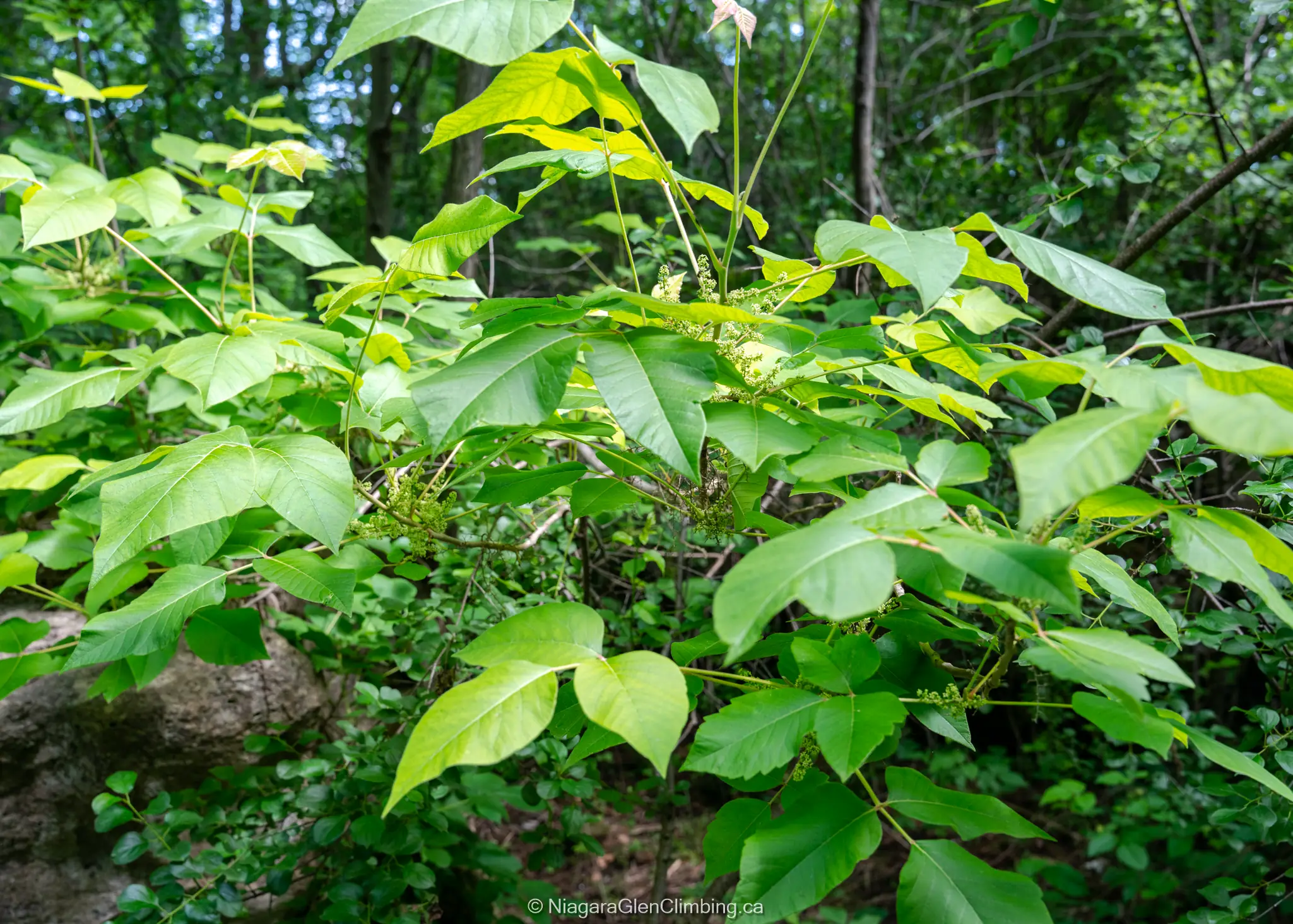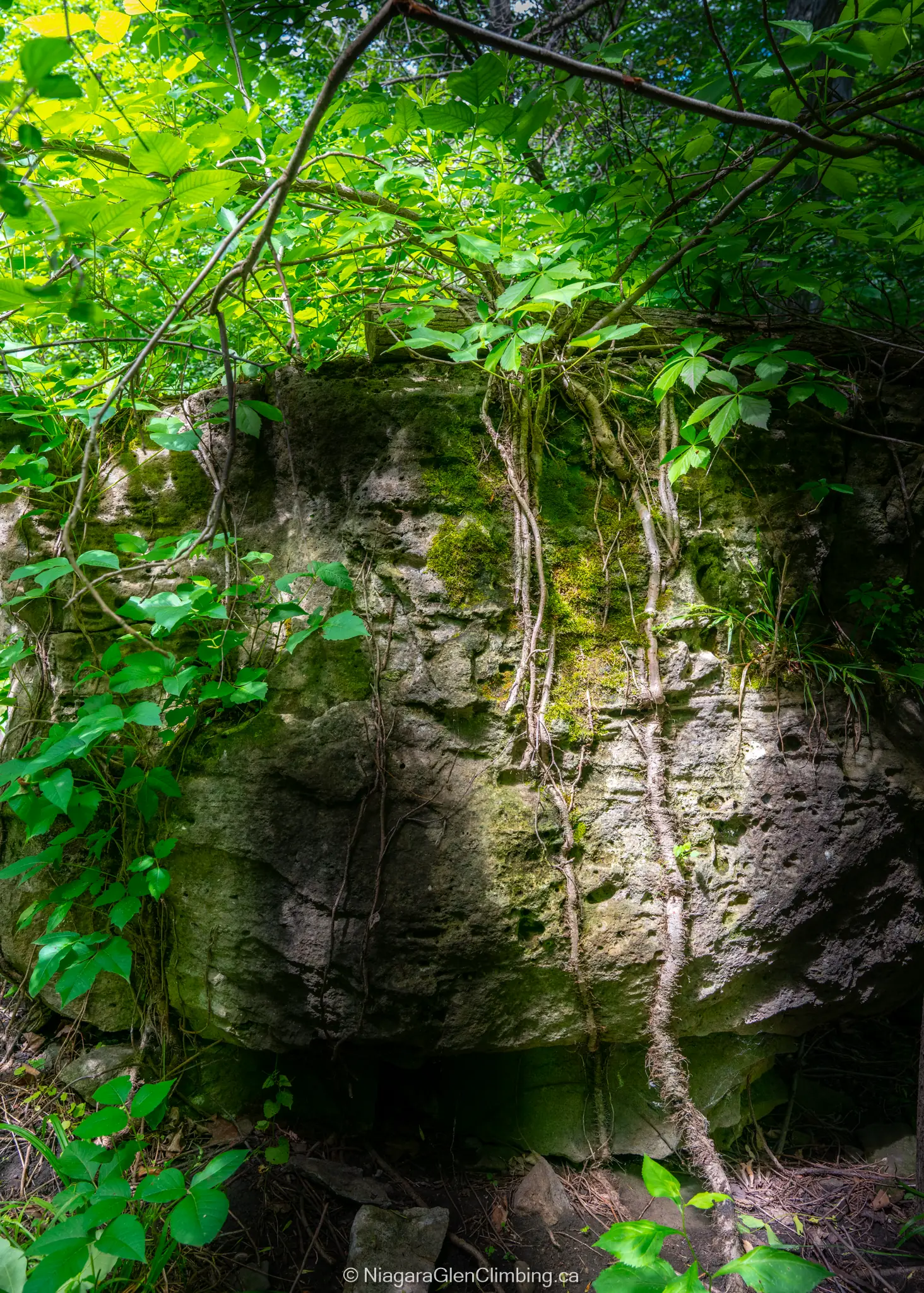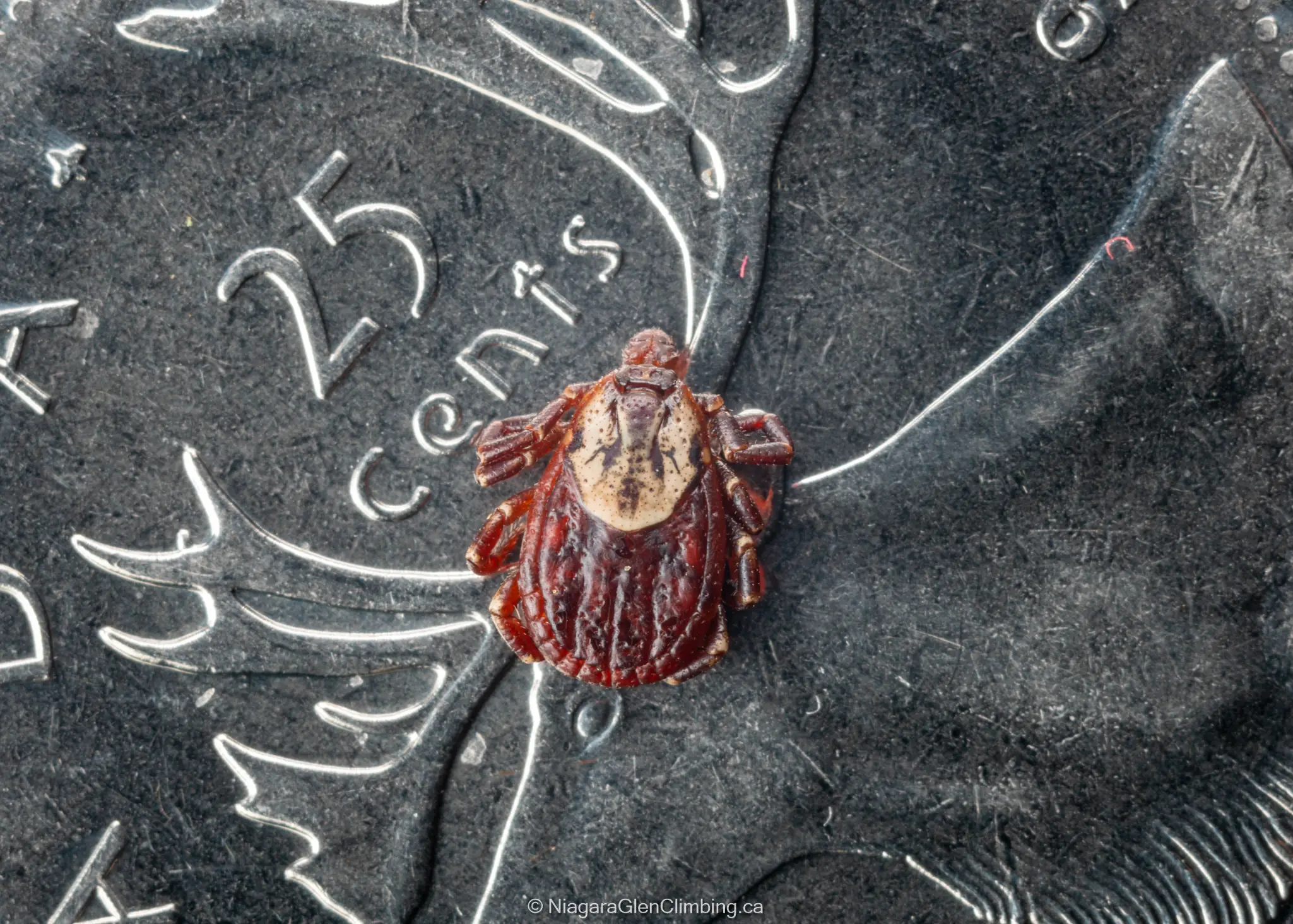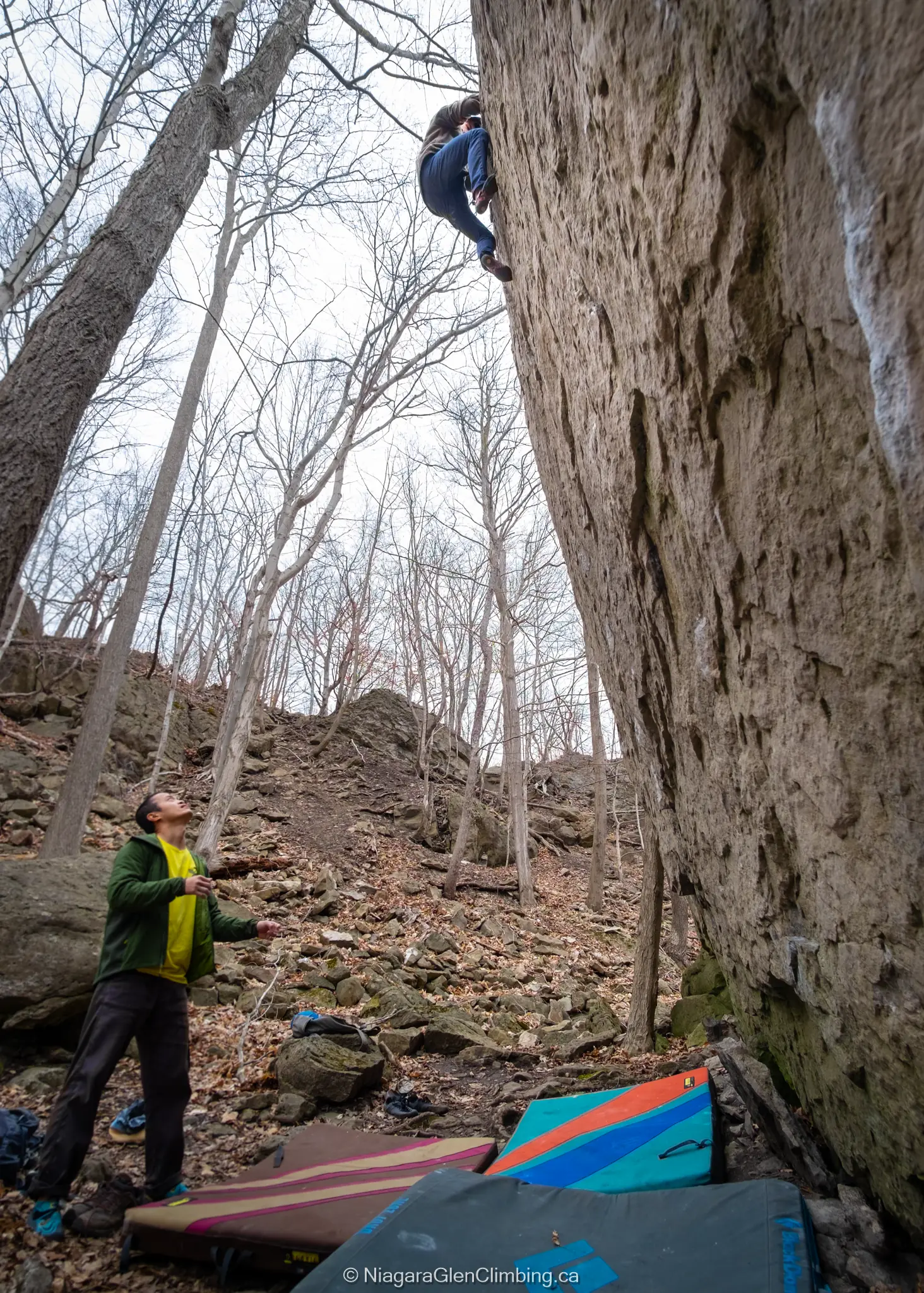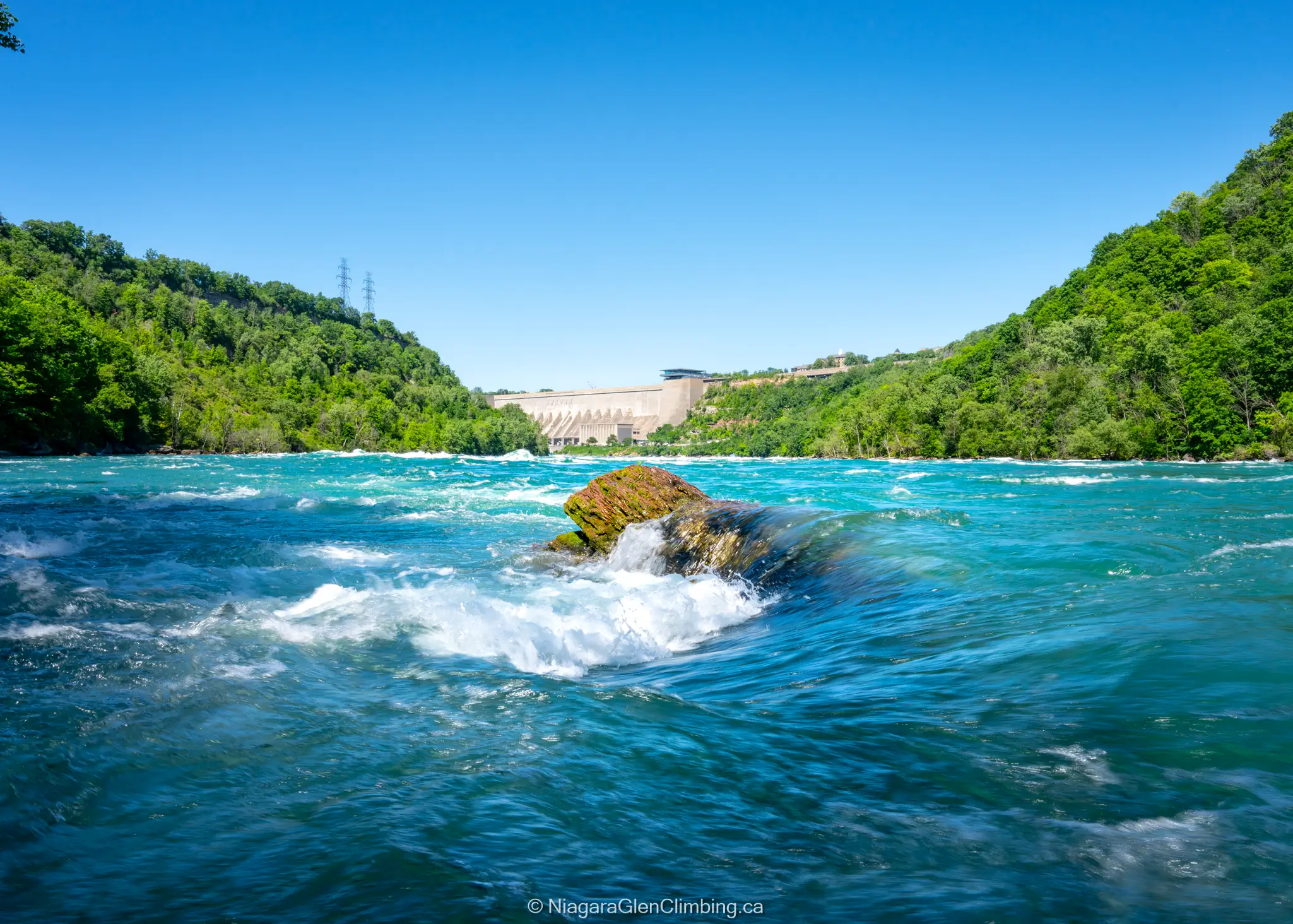The Niagara Glen is a very accessible and safe place to climb — common sense will largely keep you out of trouble — however there are a some things to watch out for.
Poisons Ivy
Be careful when the glen is green because a lot of that green is poison ivy. Encountering it on or near the main trails is unlikely but as soon as you wander away — which is required to get to many boulders — you are likely to encounter some, or a lot, of poison ivy. There are plenty of boulders that I don't bother going to when the glen is green because the path and/or landing may be covered in poison ivy. Poison ivy is thankfully less common on top of boulders but that's not to say you'll never encountered it when topping out — another good reason to inspect your top-outs before climbing!
Removing urushiol - the allergenic oil in poison ivy - is key to mitigating further reaction when exposed. A good scrubbing with a wet wash cloth and dish detergent can be quite effective.
The poison ivy in the glen is generally easy to avoid once you know how to indentify it. I've accidentally brushed against some without incident though your reaction may vary.
Scroll through the following gallery for a variety of poison ivy I've encountered in the glen. Click each image for full size.
Ticks
Ticks are a growing concern as they've been migrating farther north due to climate change. Thankfully they're not all too common in the glen — I've only ever encountered a single tick in all the days I've spent there — but it's still a good idea to take some precautions:
- The less exposed skin the better
- Store any removed clothing in your pack instead of leaving it laying around
- Use insect repellent
- Some kit for safely removing the entire tick in the event one does embed itself
- Don't forget to do your tick checks
High-Balls and Bad Landings
The glen is home to a number of problems that may be considered high-ball, bad landing, or both (these are denoted in the guidebook with an icon(s) of a heart with wings). Be aware that the protection of a crash pad is much different than those nice cushy gym mats: they're less padded, may shift, and often will not lay flat on the ground. A fall from a height that may otherwise be no big deal in a gym is probably going to be much different on crash pads. You don't want to have to learn this the hard way because a rescue from the glen — even for something as seemingly trivial as a twisted ankle — is quite the ordeal.
Common sense and a reasonable sense of self-preservation should keep you out of most hazardous situations... and a good spotter: the guardian angels of climbing.
The Niagara River
The Niagara river is spectacular in its own right. The class VI rapids are a sight to behold with a volume of water greater than two olympic swimming pools raging past every second. Caution must be excercised when near the water (where permitted) as getting pulled into the river is not a return trip. Constant spray from the river makes the rocks near the water persistently very slippery. Many have unfortunately learned this lesson at the cost of their lives. Be sure to check posted signage before entering the glen as some trails nearest the water (eg. whirlpool) may be closed.
